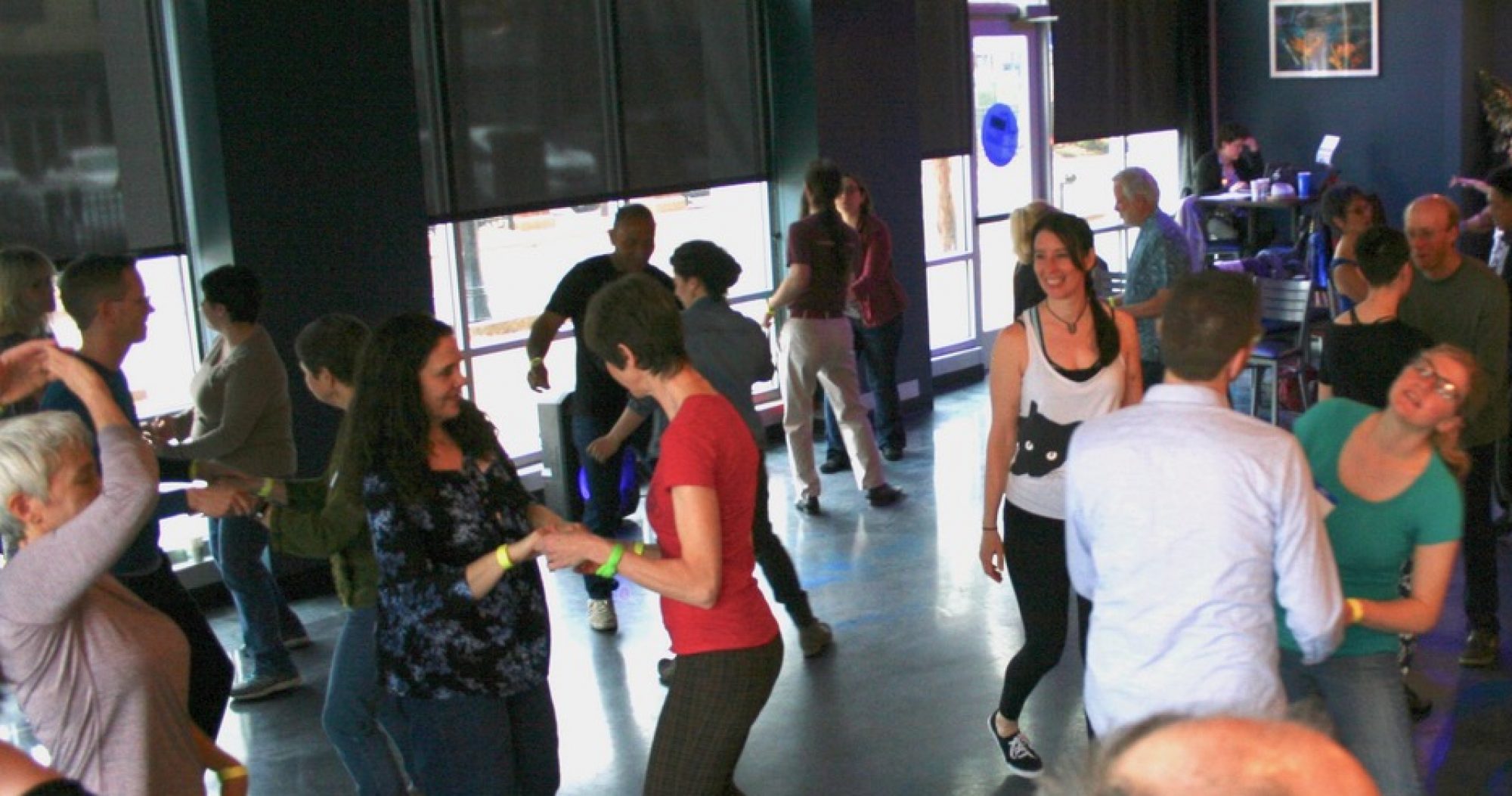Athletic posture – Weight is forward on balls of the feet with knees bent, hips slightly back, shoulders slightly forward, and feet shoulder width apart.
Groundedness – Dancers keep their center of gravity low and a grounded quality of step and use of the floor to drive movement as if stepping through molasses.
Pulse – Dancers mark time with downward or pendular movements.
Relaxed Natural Movements – Dancers are relaxed, using isolated and minimal muscle tone to drive and redirect their partner’s energy. Overall there is a sense of calm and control with the effect of giving an unhurried casual laid-back appearance of ‘coolness’.
Lag – Steps and body movements may strike after the beat, rather than on the beat as in most dances. This can also be described as dancing in the space between the beats.
Shape – Dancers create visually interesting shapes with their bodies emphasizing angles and asymmetrical but balanced shapes.
Rhythm Play – Dancers create and combine rhythms to fit the music and simultaneously express two or more rhythm layers using different parts of the body such as feet, hips and shoulders.
Improvisation – Dancers create and combine steps and moves rather than following a prescribed pattern of steps.
Embrace – Dancers start each dance in close embrace but may change their orientation with their partner throughout the dance. They may dance in closed embrace, open embrace, side by side, hold one or both hands, or break away from each other to dance without touching their partner although they are still interacting with each other.
